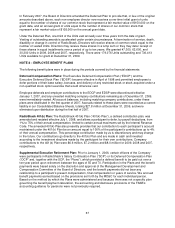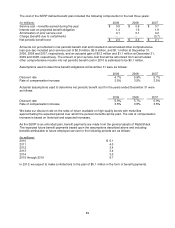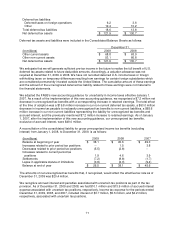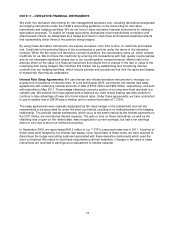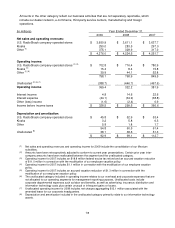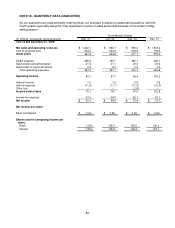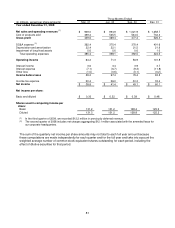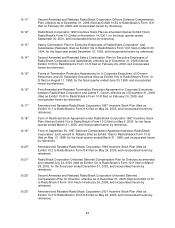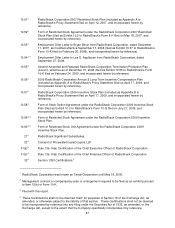Radio Shack 2009 Annual Report Download - page 84
Download and view the complete annual report
Please find page 84 of the 2009 Radio Shack annual report below. You can navigate through the pages in the report by either clicking on the pages listed below, or by using the keyword search tool below to find specific information within the annual report.77
Continuing Lease Obligations: We have obligations under retail leases for locations that we assigned to
other businesses. The majority of these lease obligations arose from leases for which CompUSA Inc.
(“CompUSA”) assumed responsibility as part of its purchase of our Computer City, Inc. subsidiary in
August 1998. Because the company that assumed responsibility for these leases has ceased operations,
we may be responsible for rent due under the leases.
Following an announcement by CompUSA in February 2007 of its intention to close as many as 126
stores and an announcement in December 2007 that it had been acquired by Gordon Brothers Group,
CompUSA’s stores ceased operations in January 2008. We may be responsible for rent due on a portion
of the leases that relate to the closed stores. As of February 8, 2010, we had been named as a defendant
in a total of 12 lawsuits from lessors seeking payment from us, six of which had been resolved.
Based on all available information pertaining to the status of these lawsuits, and after applying the
FASB’s accounting guidance on accounting for contingencies, the balance of our accrual for these
obligations was $6.2 million and $9.0 million at December 31, 2009 and 2008, respectively. We have
continued to monitor this situation and will update our accrual to reflect new information on outstanding
litigation and settlements as more information becomes available.
Purchase Obligations: We had purchase obligations of $314.1 million at December 31, 2009, which
include product commitments, marketing agreements and freight commitments. Of this amount, $292.7
million related to 2010.
NOTE 14 – CORPORATE AND FIELD HEADCOUNT REDUCTION
During the first quarter ended March 31, 2007, we recorded $8.5 million of pre-tax employee separation
charges in selling, general and administrative expense in connection with the termination of employment
of approximately 280 of our corporate support staff. We made cash payments to these individuals during
2008 and 2007 in the amounts of $1.9 million and $6.6 million, respectively. The reserve balance for
these separation charges was zero at both December 31, 2009 and 2008.
NOTE 15 - SEGMENT REPORTING
We have two reportable segments, U.S. RadioShack company-operated stores and kiosks. The U.S.
RadioShack company-operated store segment consists solely of our 4,476 U.S. company-operated retail
stores, all operating under the RadioShack brand name. Kiosks consist of our network of 562 kiosks,
primarily located in Sam’s Club and Target locations. In April 2009 we agreed with Sprint Nextel to cease
our arrangement to jointly operate the Sprint-branded kiosks in operation at that date. This agreement
allowed us to operate these kiosks under the Sprint name for a reasonable period of time, allowing us to
transition the kiosks to a new format. In August 2009, we transitioned these kiosks to multiple wireless
carrier RadioShack-branded locations. They are now managed and reported as extensions of existing
RadioShack company-operated stores located in the same shopping malls. Both of our reportable
segments engage in the sale of consumer electronics products; however, our kiosks primarily offer
wireless products and associated accessories. These reportable segments are managed separately due
to our kiosks’ narrow product offerings and performance relative to size.
We evaluate the performance of each reportable segment based on operating income, which is defined
as sales less cost of products sold and certain direct operating expenses, including labor, rent, and
occupancy costs. Asset balances by reportable segment have not been included in the segment table
below, as these are managed on a company-wide level and are not fully allocated to each segment for
management reporting purposes.


